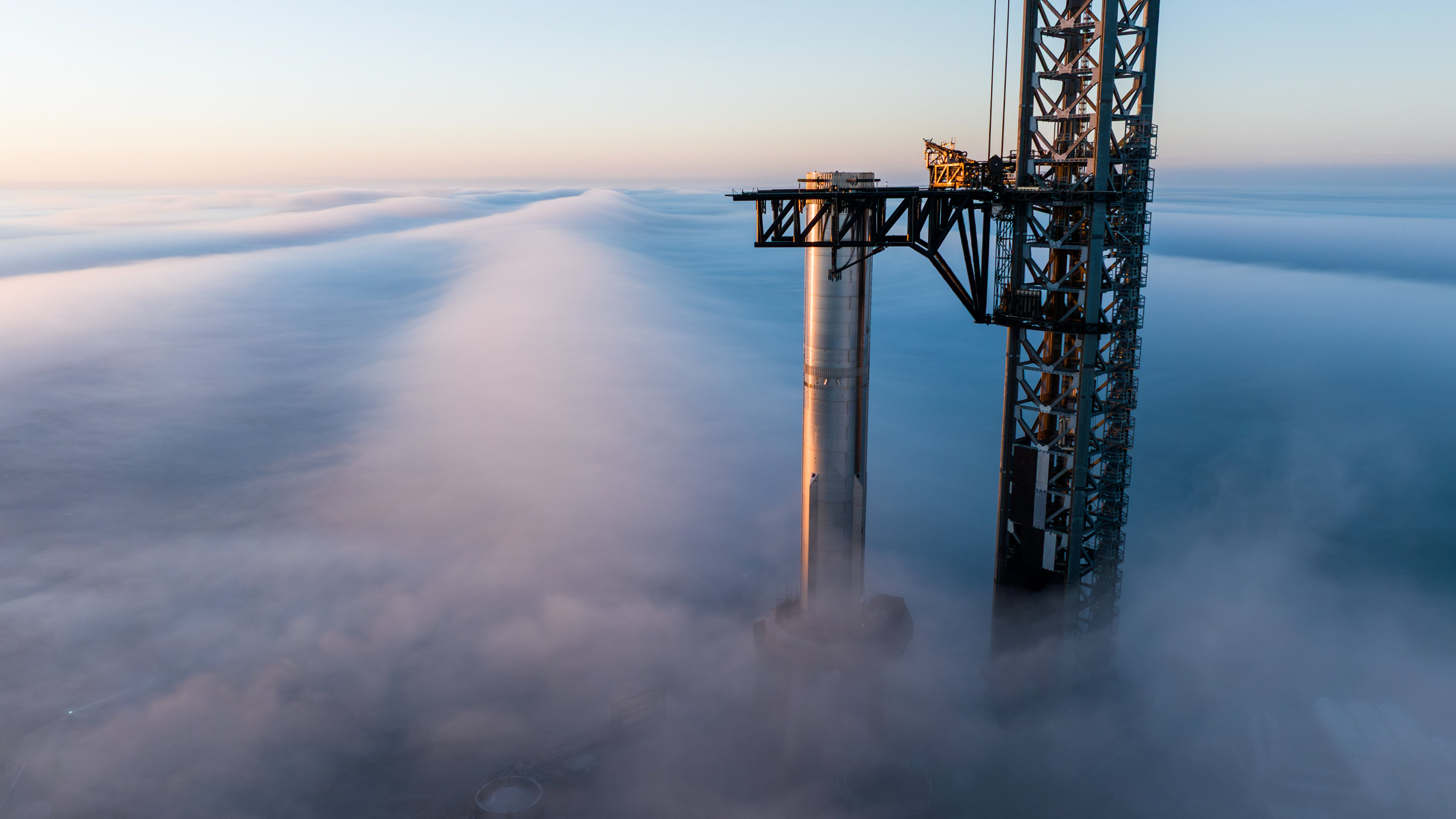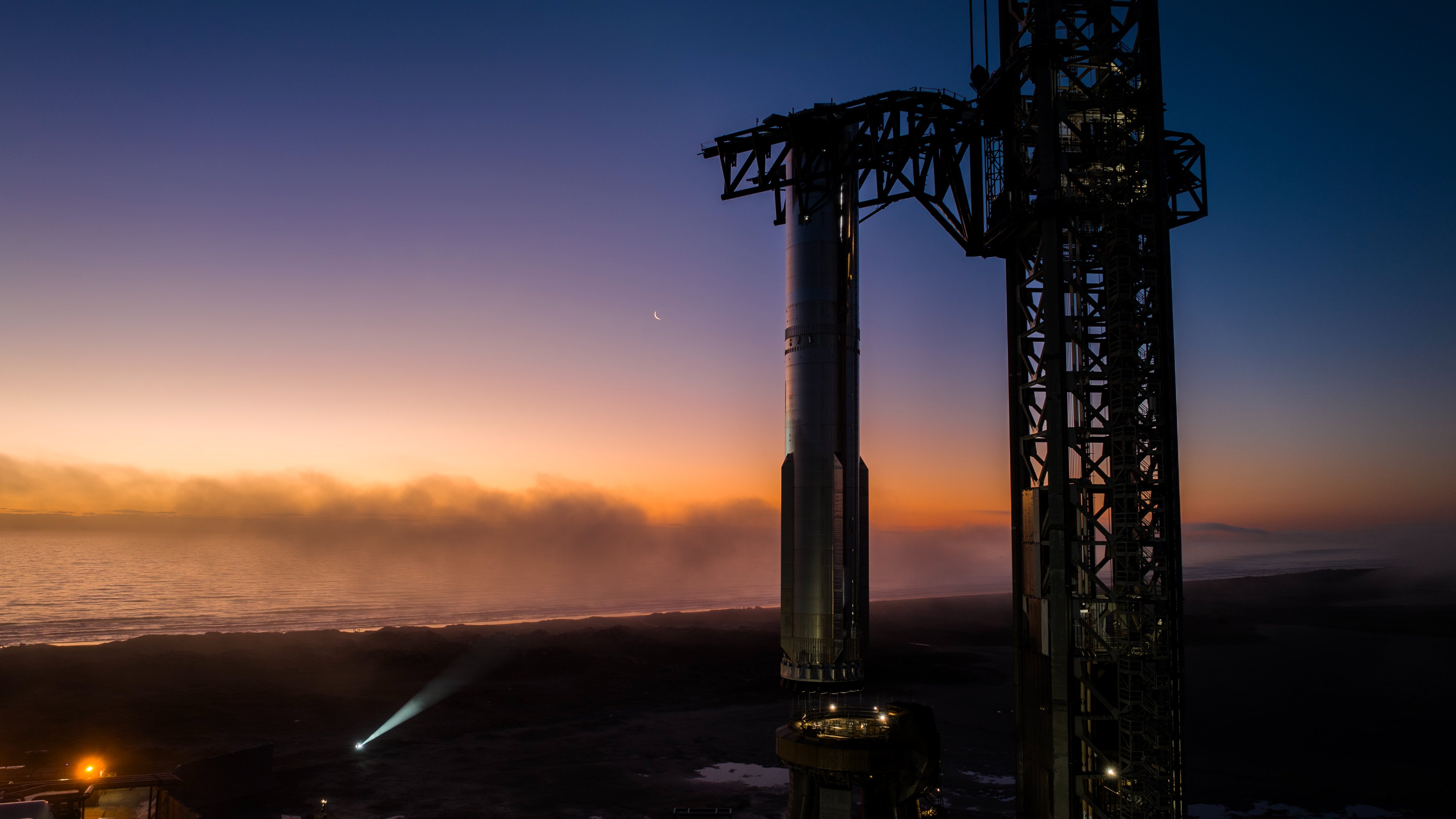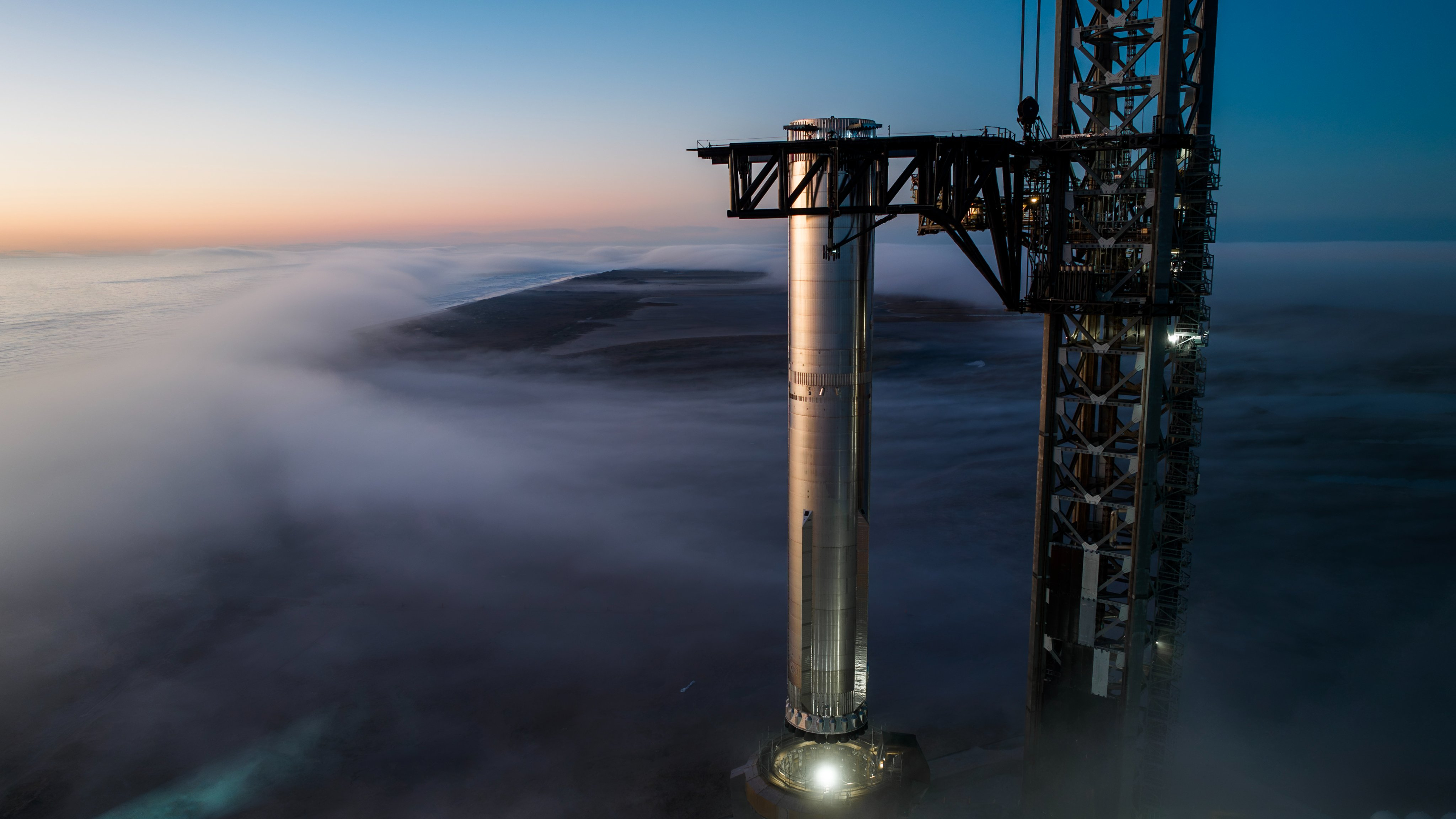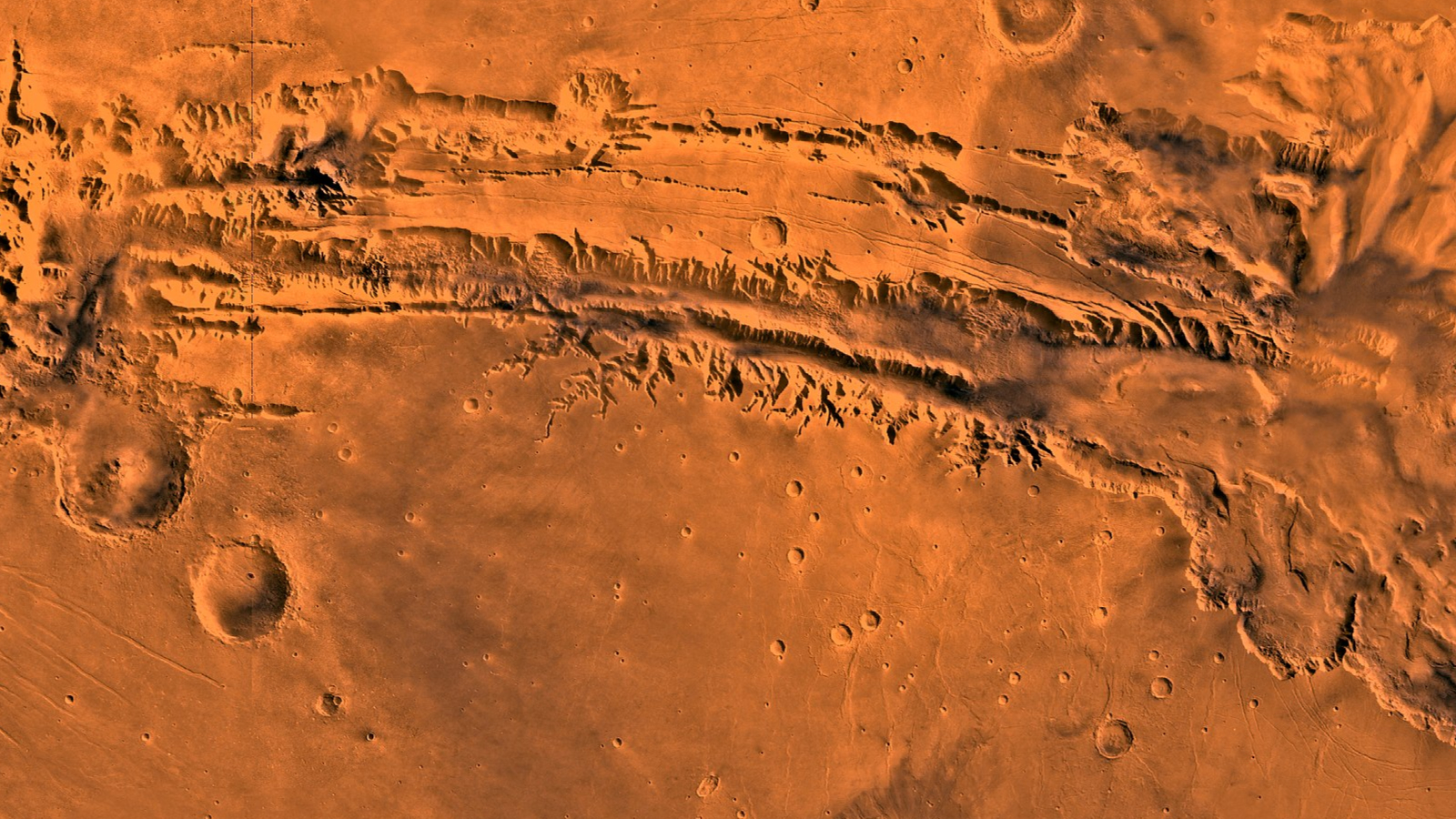
Starship hardware has made it to the pad ahead of a planned liftoff this week.
SpaceX posted photos on X today (Feb. 25) showing Super Heavy, the giant first stage of its Starship megarocket, being lifted onto the orbital launch mount at its Starbase site in South Texas.
The milestone keeps the company on track to launch the eighth-ever Starship test flight this Friday (Feb. 28).

SpaceX is developing Starship — the biggest and most powerful rocket ever built — to help humanity settle the moon and Mars, among other exploration feats.
The 403.5-foot-tall (123 meters) rocket consists of two elements, both of which are fully reusable: Super Heavy and an upper-stage spacecraft known as Starship, or Ship for short.
Starship has flown seven times to date, most recently on Jan. 16. That mission was a mixed bag; SpaceX caught Super Heavy with the "chopstick" arms of Starbase's launch tower about seven minutes after liftoff as planned, but Ship suffered a serious problem and ended up detonating over the Atlantic Ocean.
SpaceX recently wrapped up its anomaly investigation, which traced the cause to unexpectedly high stresses in Ship's propulsion system during flight. Those stresses led to a propellant leak, which caused engine shutdowns and ultimately triggered the vehicle's autonomous flight termination system.
Breaking space news, the latest updates on rocket launches, skywatching events and more!
Related: SpaceX catches Super Heavy booster on Starship Flight 7 test but loses upper stage (video, photos)

Flight 8's goals will be similar to those of Flight 7, SpaceX has said. The company will attempt another Super Heavy chopsticks catch, and Ship will attempt to deploy four dummy Starlink satellites on a suborbital trajectory. (The vehicle carried 10 mock Starlinks on Flight 7 but never got the chance the deploy them.)
If all goes to plan, Ship will splash down in the Indian Ocean off the coast of Western Australia about 66 minutes after launch.
Join our Space Forums to keep talking space on the latest missions, night sky and more! And if you have a news tip, correction or comment, let us know at: community@space.com.

Michael Wall is a Senior Space Writer with Space.com and joined the team in 2010. He primarily covers exoplanets, spaceflight and military space, but has been known to dabble in the space art beat. His book about the search for alien life, "Out There," was published on Nov. 13, 2018. Before becoming a science writer, Michael worked as a herpetologist and wildlife biologist. He has a Ph.D. in evolutionary biology from the University of Sydney, Australia, a bachelor's degree from the University of Arizona, and a graduate certificate in science writing from the University of California, Santa Cruz. To find out what his latest project is, you can follow Michael on Twitter.
-
DrRaviSharma When I worked on the Apollo Program, we accomplished more on each Saturn V development.Reply
The SpaceX model is rapid fire and thus measure of incremental success is smaller and we do not yet have an orbital reliability of the STARSHIP.
It is necessary for SpaceX to narrow the gap in becoming the orbital reliable option especially since the new NASA options on Artemis might be affected.
As maintained, in my opinion we need two reliable capabilities of reaching Moon.
Wishing SpaceX a success to orbit whether they catch the falcon back on launchpad so focus is on SHIP reaching orbit.
Thanks,
Ravi
